As Hurricane Florence barrels into the Atlantic seaboard, causing widespread evacuations and millions in expected damages, I’m reminded of the other devastating hurricanes the United States has experienced in recent years. Maria. Katrina. Ike. The list seems to go on and on.
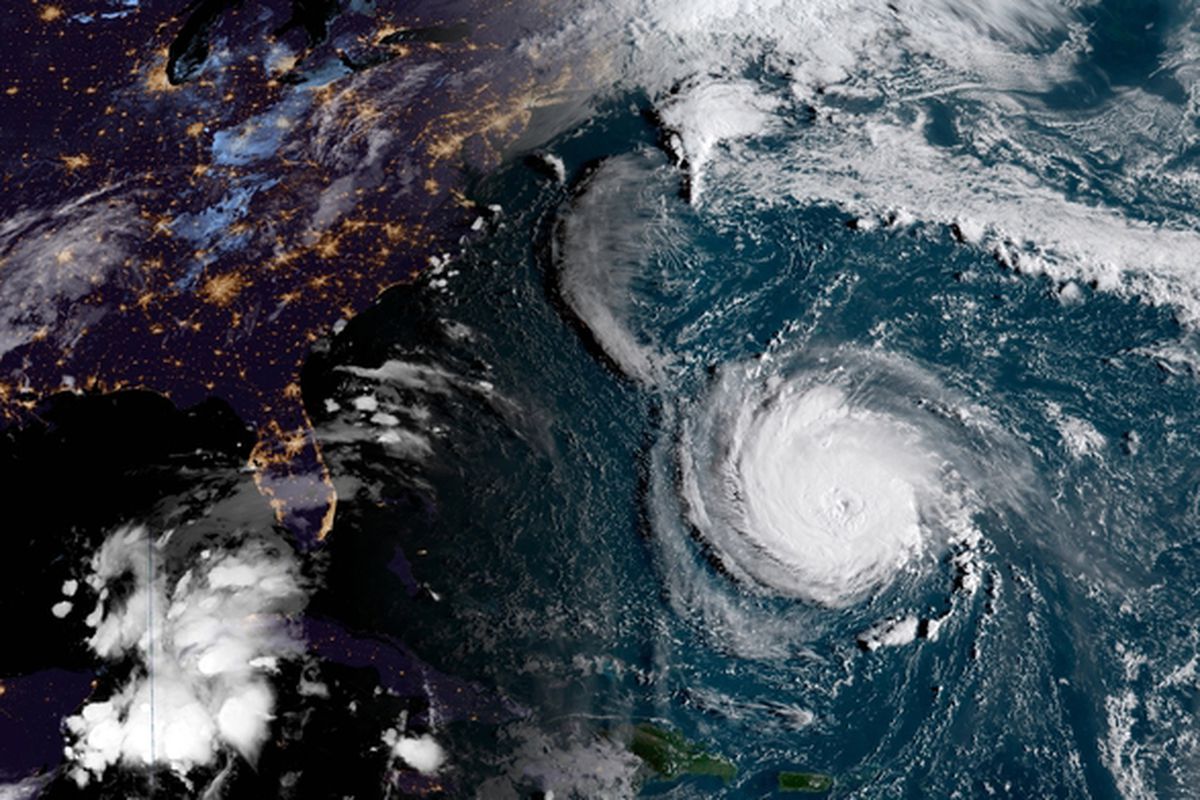
While on the surface it seems like hurricanes are getting worse and worse, is that actually true? With so much opinion shaping the conversation, I knew I needed to dig into the data to find out what’s really going on. Are we seeing more intense storm patterns? Is the damage from these storms rising? And what can be done to limit the damage caused by future storms?
By using ThoughtSpot, I was able to quickly load in data from the National Oceanic and Atmospheric Administration (NOAA), EPA.gov, and Wikipedia and instantly start searching through the data.
Here’s what we found.
The Average Number of High Intensity Storms is Increasing Over the Last Two Decades
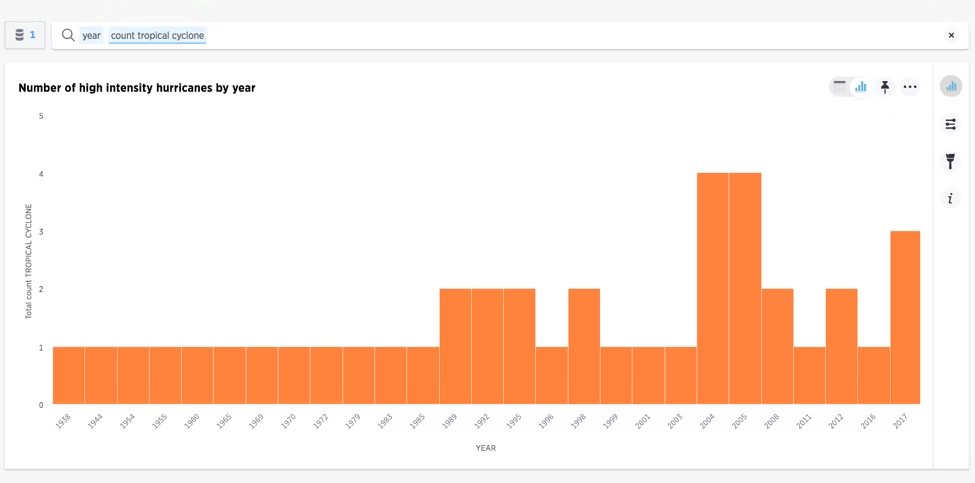
Source: NOAA - https://www.nhc.noaa.gov/news/UpdatedCostliest.pdf (Table 3b)
Using a simple search looking at ‘year’ and ‘count tropical cyclone’ ThoughtSpot instantly analyzed storm categorization data from NOAA and generated this graph. It’s easy to see that the number of storms deemed high intensity is growing over the last two decades.
Hurricanes Are Causing More Damage Than Ever
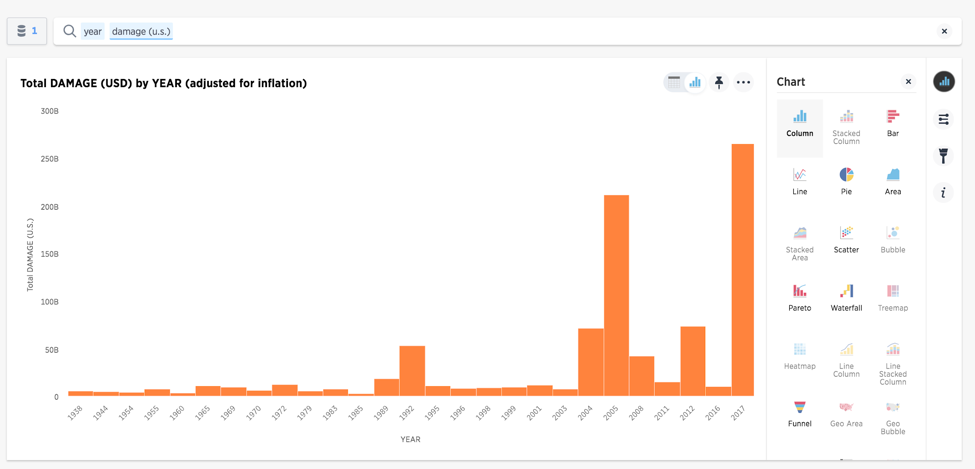
Source: NOAA - https://www.nhc.noaa.gov/news/UpdatedCostliest.pdf (Table 3b)
Finding out that the number of high intensity storms is increasing led me to a new question: is the total damage from storms overall increasing at a similar rate? Is it getting worse? Or have we figured out how to alleviate the impact of storms in recent years?
One simple search in ThoughtSpot later, and I had my answer. By searching for ‘damage’ and ‘year’ I instantly saw a correlation between the growing number of storms and total damage from hurricanes yearly.
But this answer sparked a new question for me. Is this damage coming from all storms? Or high intensity storms specifically? Adding storm categories ‘3, 4, 5’ into my search, I quickly saw that damage from high intensity storms specifically is growing in recent years.
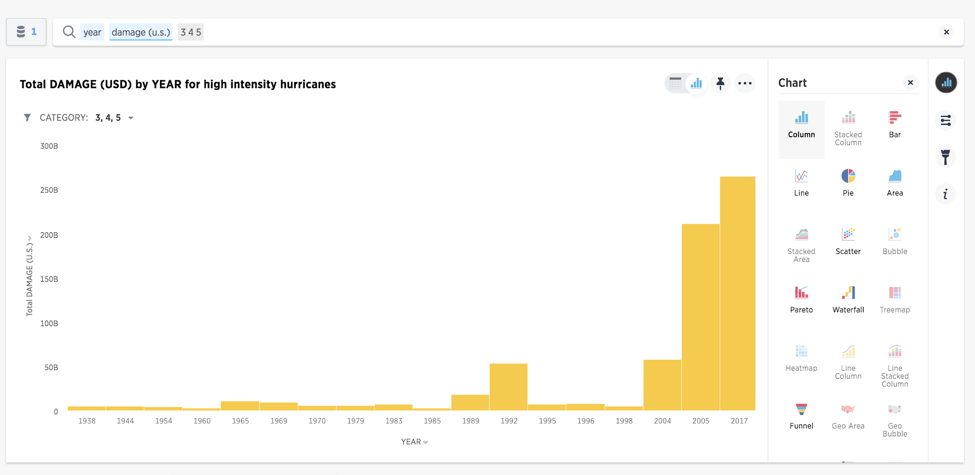
Source: NOAA - https://www.nhc.noaa.gov/news/UpdatedCostliest.pdf (Table 3b)
The Oceans are Storing More Heat, Giving Strength to Hurricanes
Using ThoughtSpot, it is clear hurricanes are getting stronger and causing more damage. So what gives?
One potential explanation: ocean heat. Warmer ocean waters inherently have more energy, and lend this energy to oceanic storms like hurricanes. Could warmer oceans be to blame?
To answer this question, I needed to analyze a new dataset. In just a few seconds, I uploaded data from the EPA, and searched for ocean heat and year. Instantly, I had my answer. Ocean heat has been rising since the late 1960s!
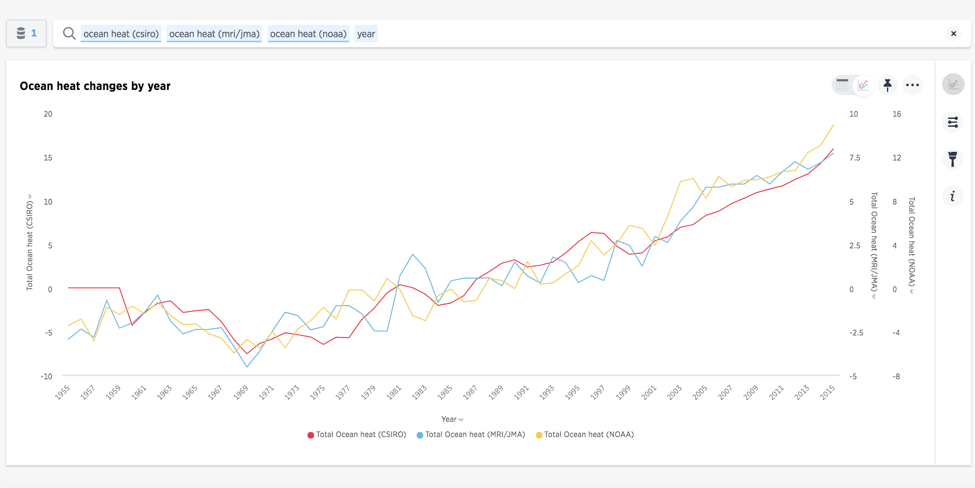
Source: EPA: https://www.epa.gov/climate-indicators
For storms, surface temperatures are particularly important to track. The warmer the water the closer to the storm, the stronger the storm can become.
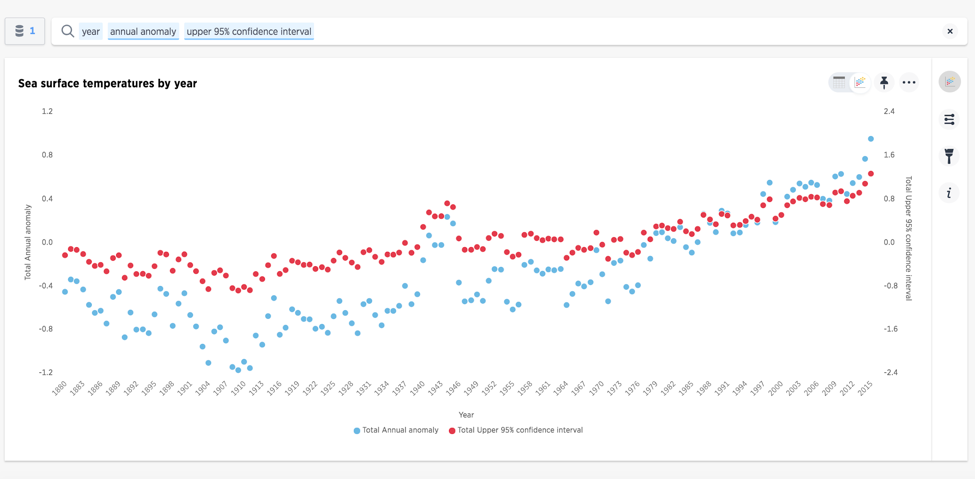
Source: EPA: https://www.epa.gov/climate-indicators
A quick search on this data to look at surface temperatures showed it’s following a similar trend, rising consistently over the last century.
Sea Levels are Rising, Causing More Damage from Flooding
I already knew at this point damage from storms was increasing, but I wanted to find out why.
One of the biggest causes of storm damage is flooding, which is exacerbated when sea levels are higher. Looking at the same EPA dataset, I simply searched for year and adjusted sea level. My suspicions were correct. Like temperatures, sea levels have been rising consistently for the last century.

Source: EPA: https://www.epa.gov/climate-indicators
Storm Deaths in Recent Years are Rising, but There’s Hope
Damage from hurricanes is one thing, but human deaths from storms is another thing entirely. Using a combination of NOAA data and data from Wikipedia, I analyzed trends in deaths caused by hurricanes.
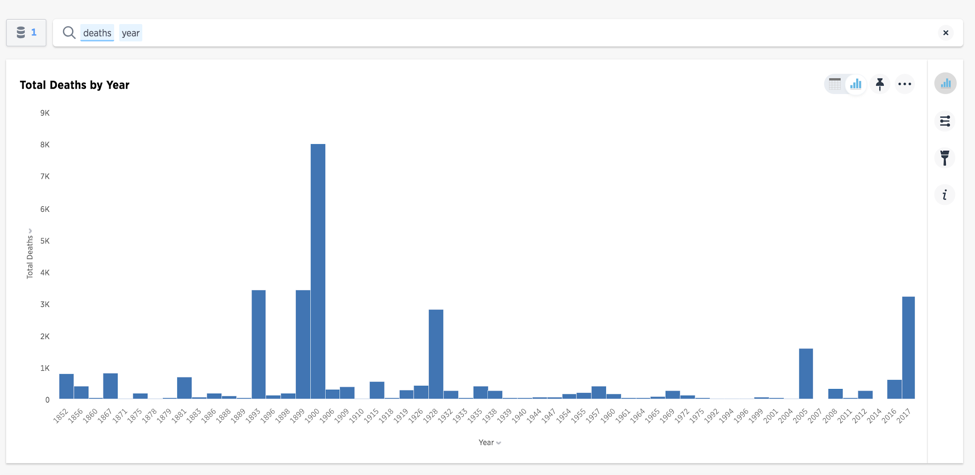
Sources: 1. NOAA (https://www.nhc.noaa.gov/pdf/nws-nhc-6.pdf, Table 2); 2. Wikipedia (https://en.wikipedia.org/wiki/List_of_United_States_hurricanes)
It’s true deaths have risen in the past decade compared to the previous four. While that may appear bleak, looking back further shows we have made serious strides in preventing deaths from storms in the last century. Better forecasting, improved infrastructure, and more coordinated rescue efforts are all contributing to this trend.
Data Can Help Us Continue to Improve Disaster Response
Hurricanes have definitely picked up steam over the last two decades, costing more to the economy than ever before, while the trends around human deaths seem to be going in the wrong direction, ratcheting up over the last two decades instead of decreasing.
Analyzing data doesn’t just help us understand these hurricanes. It helps us respond, saving money and more importantly, lives. For example:
Real-time data can help responders operate more quickly and speed up rescue efforts
Crowdsourcing data helps establish accurate maps of shelters and flooding
Companies can leverage big data to create supply chains to support disaster relief
It’s clear many factors are contributing to the rise in storm intensity. It’s also clear new, data-driven response strategies can be utilized to combat these storms, even as they become stronger and more frequent.








